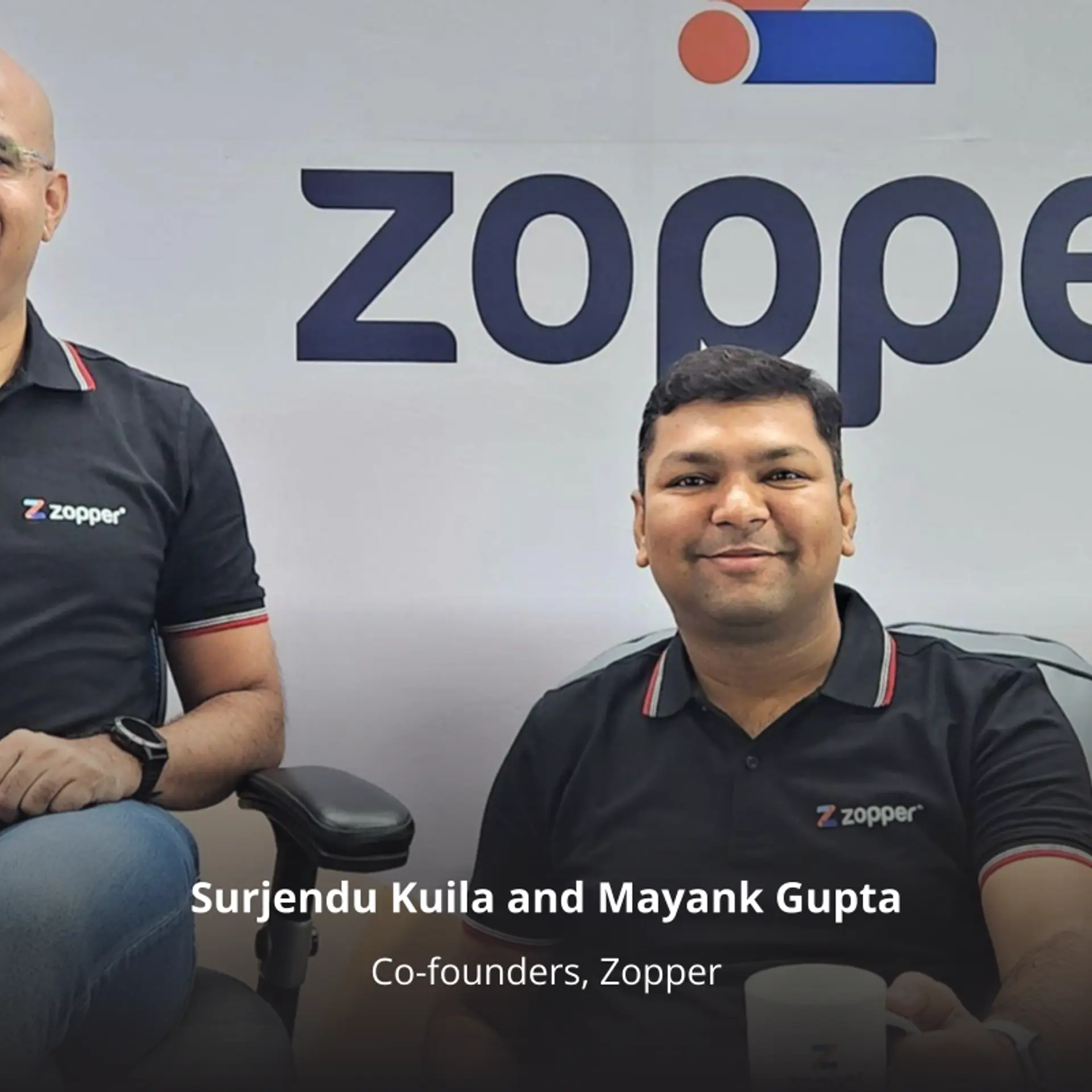How this startup by IIM-C alumni fights piracy and mediocre design
The debate around piracy is as old as content itself, but most of us fail to realise the sheer enormity of the problem and the ubiquity of it. We instinctively think of scorned filmmakers and singers maybe, but piracy is a problem that affects almost every creative soul who is in the business of design and content – and more often than not, they have no one fighting their battle. Right until a “Racoon” stormed in, with the perfect solution.
Thirty-year old Naresh Bharadwaj,an alumnus of IIM-C, was always easily deceived by the big idea. His corporate experiences with Tech Mahindra, Yahoo,and Capillary have been punctuated by his attempts to start a venture. And start he did! With a sports news website (iSport), an in-classroom content management system, Classmate,and finally Racoon.

Racoon started out as something else entirely. His Co-founder Aditya Tripathi, 28,and he were friends next-door neighbours on campus at IIM Calcutta. As for Aditya, boarding school was where he had fallen in love with creating content. His schooling and college was rife with stints of graphic designing for the in-house magazines and whatnot. Aditya became all too familiar with the sweat and soul that went into creating something pleasing to the eye. Eventually, he joined Airtel where he worked in sales for about a year before he and Naresh teamed up to build Racoon.
Racoon is born
Racoon was incorporated in October 2013. “At Racoon, we first sourced used smartphones from local ‘buy-back’ markets and then materially refurbished the product with a six-month warranty. However, in a few months we realised we lacked price competitiveness in a market dominated by transactions in cash and illegal imports,” says Naresh.
At the same time, they were witnessing a growing number of smartphones and phone cases being retailed both offline and online. “We noticed that a smartphone, despite being a deeply personal product, seldom afforded options to personalise its appearance. It struck us that a phone case with a customised print could be the answer,” he says.
By August 2014, Racoon was raring to launch the widest range of customisable phone cases. And by no later than December 2014, they had sold over 3,000 units with everything from selfies, cars, superheroes, and many other eccentricities printed on a phone case.

Changing with change
Once their third Co-founder Sivaprakash Saripalli joined them in April 2015, they focused further on their technology and product platform. A trend they spotted through their sales figures was that only 30 per cent of their sales were selfies, family pictures, and other personal objects. The rest of sales constituted all major popular themes – like TV shows, movies, sports, Internet memes, etc.Following this, they identified a vibrant community of independent digital artists developing content on Behance, Facebook, Instagram based on these pop-culture references.
“Time was ripe to put the two together! So we added new products – t-shirts, posters,and framed art.In August 2015, we reached out to these artists to pilot a new Racoon platform where these artists can instantly monetise their portfolios. The exercise was a success – both for consumers and independent artists,” says Naresh.
Fire one, kill two
Racoon offers a solution to a twin problem – consumers who were offered poor quality merchandise featuring their favourite content and content creators receive negligible income for products featuring their work. These problems arise due to inconsistent market experiences for buyers and difficulty in product manufacturing, distribution and piracy for content creators. Racoon resolves these problems by helping content creators develop merchandise rapidly at little to no cost and by creating branded shopping experiences.
Further research revealed that the wider branded merchandising landscape was beleaguered by other problems – inventory costs and distribution and piracy. The big media brands in India (Bollywood and Hollywood studios, TV brands) preferred to avoid branded retailing and only licensed their content to partners who were willing to take the product inventory and market risk. A growing community of YouTube stars, performing art troupes, online comics also saw the benefit of merchandising but were hesitant in taking products to markets for aforementioned reasons.
Now, Racoon proposes to help all these content creators – that is, independents and media brands– develop merchandise rapidly at little to no cost without the need to manage inventory or distribution.
“Once we changed track in June 2015, the software development and the partnership programme commenced immediately. The platform was launched in late August 2015.Our core set of image processing technologies was now made available to anyone capable of creating digital graphics. Now, with a single high-resolution graphic, any content creator could have over 150 products retailed with a branded storefront,”says Naresh

Big picture
The market size for customisation of phone cases was valued at around $300million in 2015 and for t-shirts at $2billion in 2014, and now, content creators got in on it with ease.
This is now the identity of Racoon – great designs of your absolute favourite thingamabobs on the Internet, portable on various products. With this improvisation, Racoon registered milestones by surpassing targets every quarter. With over 30,000 customers buying phone cases in the past 12 months, the first 10,000 units were sold by March 2015 itself. And since the diversification, they had registered over 6,000 unit sales of their other merchandize in December 2015.
The company remains to be fully bootstrapped between the founders, at around $30K.“Consumer applications in digital printing is still a nascent opportunity and we see huge headroom in variety of printed products that can be introduced to the market.We aim to be the leader in the branded merchandise market by focussing on technology and product innovation. At this stage, we are looking to add 20 digitally connected, large audience content partners to the platform andfive additional products to catalogue in 2016,” Naresh lets on.
YourStory take
We are fondly referred to as the Netflix generation, and India has its own Netflixers aplenty too. The Internet and its virality have ensured that every show and film franchise almost always creates a cult following behind it, giving rise to communities. As pop culture references are a big part of the socialisation processes of the youth, they are a very personal matter for people, and making these references wearable and usable should seem like the obvious billion dollar business idea, except, it was always unorganised, expensive, and thus, like Naresh mentioned, created great room for piracy.
There are very few portals that offer an exhaustive range of fanfiction, and Racoon’s business model is a double edged sword – as it gives genuine design talent a fair stage, and another means to monetise their skill, and on the other hand, gives consumers a single platform where they can find attractive goodies. As far as the fandom goes, the force is strong with that one! There will always be takers, but the key is, to strike the right balance between quality and price so that their larger cause of eradicating piracy becomes a reality.
Website: Racoon







